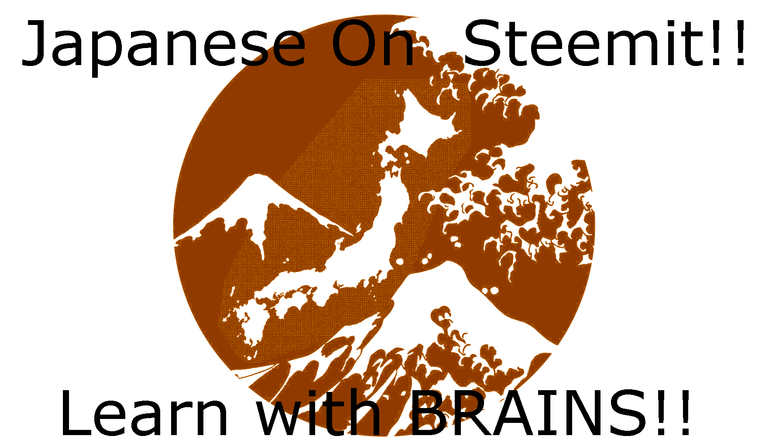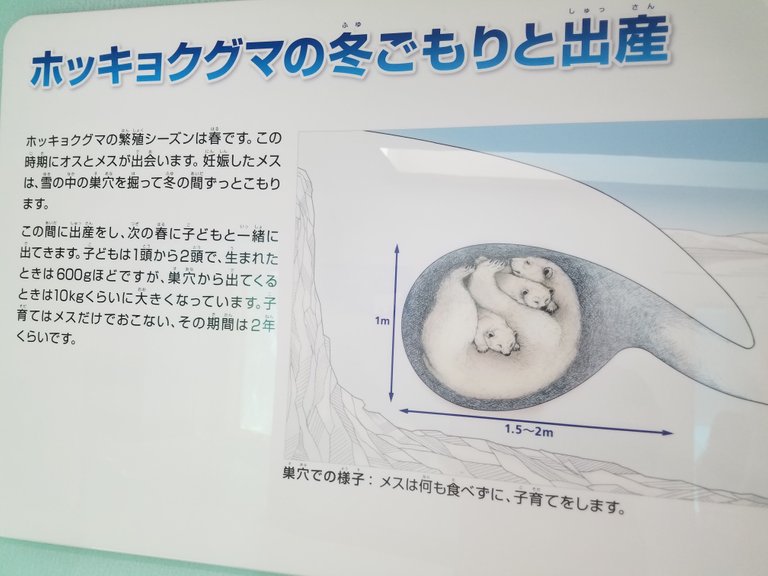Argh! More of that squiggly stuff! It's OK -- Breathe -- It's still simple, even if it's a little bit more complicated. 😵

So, last lesson we talked about Hiragana & Katakana and covered the basic phonetic alphabet. This time we'll be going a little bit further by discussing the altered forms of the Kana, as well as some of the ways that they interact to convey the timing that is present in the language. I spoke briefly about Morae (timing of the pronunciation) in an earlier post about pronunciation, and I'll be talking a bit about them a bit more today as well.
(for the previous lesson Click Me!!; For the pronunciation post Click Me!!)
OK -- So first things first
SOME of those basic Kana characters from last week are able to be modified using diacritic symbols that look like x゙ or x゚... Very common and used constantly. I'm not going to go too in depth with them, but basically here they are (using only the あ(a) vowel)
| か(ka) | が(ga) | n/a |
|---|---|---|
| (さsa) | ざ(za ) | n/a |
| た(ta) | だ(da) | n/a |
| は(ha) | ば(ba) | ぱ(pa) |
And you consistently apply them throughout the different syllables with certain exceptions, due to the differing pronunciation. There are also a couple of duplicate pronunciations that can be written a couple ways and are sometimes (rather deceptively) romanized with different pronunciations.
| し | becomes | じ | and | ち | becomes | ぢ |
|---|---|---|---|---|---|---|
| (shi | becomes | ji | and | chi | becomes | ji) |
| す | becomes | ず | and | つ | becomes | づ |
| (su | becomes | zu | and | tsu | becomes | zu) |
The modified forms of the above used to have distinct pronunciations, but are basically identical these days. The ぢ and づ aren't too common, but they are generally used if the word is part of a compound/prefixed word and the consonent is modified for that reason. This is called Rendaku and it is noticeable with everyone's favorite: すし (sushi) which becomes ずし when used with prefixes describing the type of sushi (ie. にぎりずし・ ・ちらしずし・ ・いなりずし).
SECOND: や・ゆ・よ (ya yu yo) and combined syllables
You can combine ya/yu/yo with other consonents to make new sounds, which are also pretty consistent with the same exceptions as the modifications (ie chi/shi/ji). You will generally ONLY see the -i syllables modified like this unless they're trying to represent a foreign word or something weird. So here's a list:
| base | combinations | pronunciations |
|---|---|---|
| ki | きゃ・きゅ・きょ | (kya/kyu/kyo) |
| gi | ぎゃ・ぎゅ・ぎょ | (gya/gyu/gyo) |
| shi | しゃ・しゅ・しょ | (sha/shu/sho) |
| ji | じゃ・じゅ・じょ | (ja/ju/jo) |
| chi | ちゃ・ちゅ・ちょ | (cha/chu/cho) |
| ni | にゃ・にゅ・にょ | (nya/nyu/nyo) |
| hi | ひゃ・ひゅ・ひょ | (hya/hyu/hyo) |
| bi | びゃ・びゅ・びょ | (bya/byu/byo) |
| pi | ぴゃ・ぴゅ・ぴょ | (pya/pyu/pyo) |
| mi | みゃ・みゅ・みょ | (mya/myu/myo) |
| ri | りゃ・りゅ・りょ | (rya/ryu/ryo) |
I guess shya/chya/jya/etc... were too complicated to pronounce or something, so they apparently don't exist. The same exist in Katakana as well, but they work they same way; so if you know Katakana, you should be able to figure out the equivalents pretty easily.
NEXT: Mini つ // Elongated(geminated) consonents and Elongated Vowels
So going back to the concept of Morae // timing of the language, there are times when a consonent or vowel may be elongated. This might be to change the word into another word alltogether or it may just be for emphasis depending on the word and context, but it does happen pretty often. With Consonents it is expressed using a miniature つ/ツ, such as in these examples:
(Hiragana)
にっぽん - Japan
まって - Wait
こっち - Here
(Katakana) - you might recognize these if you pronounce them ;)
トップ - (top)
グッド - (good)
ポッキー - (pocky)
Also:
there's an elongated vowel sound, which is generally just displayed as an extra vowel (あ・い・う・え・お) after the syllable. Here's a table from a resource (Tae Kim) that describes the pronunciation of long vowels as they're written in Hiragana.
| VOWEL SOUND | EXTENDED BY | EXAMPLE | PRONUNCIATION |
|---|---|---|---|
| / a / | あ | まあ | maa |
| / i / | い | いい | ii |
| / u / | う | くう | kuu |
| / e / | い | せい | sei |
| / e / | え | ねえ | nee |
| / o / | う | とう | too |
| / o / | お | とお | too |
AND THEN: The Oddity of ん // N (doesn't it actually look like an N anyways?)
Occasionally you'll run into words that have ん followed by a vowel, but not in a vowel pair... This could be exceptionally confusing if reading from romanization, even though they usually are marked by an apostrophe. The ん is quite distinct from the "n" in the consonent pairs anyways, so they're really not interchangable to begin with.
Anyways, it's just something to be aware of. Here's an example of how this could be confusing that I pulled from wikipedia due to my lack of fluency:
きねん | kinen | 'commemoration'
きんえん | kin'en | 'smoking forbidden',
きんねん | kinnen | 'recent years'
LASTLY: A quick note about the repeat me symbol
There are these guys (ゝ/ヽ) which are basically just markers used to say that you need to repeat the Kana used right before it. Note that these are unmodified versions of the previous Kana, and there's one of these in the name of a car company (いすゞ // isuzu). Anyways, they're generally only used in names as far as I know, but they do exist.
PHEW.

If you were following along (and you studied) you should be able to read (pronounce without meaning) all of this due to the handy dandy Kana above the Kanji
Well that was cumbersome. I hope that I've managed to unbury/compile some of the stuff that you might not have found in a lot of language learning resources into one easy to understand source. If there's any confusion, just let me know... Same if there are any mistakes. I'm much further than this in my quest to learn Japanese, but I AM still learning.
I am not 100% sure what I'll be doing with the Japanese language next on here, but I was thinking about going over some stuff with the Kanji since that's the order which I am progressing. I'm ~more or less~ 1 week from learning all 2136 Jōyō Kanji and I think there are some things I'd wish that I had known while learning them, and since it's pretty fresh in my mind I think that I could produce a pretty good resource for anyone who wanted to learn them. More stuff like this where the information is out there but you have to dig for it and know where to look and what to look for.
Anyways, Thanks for sticking around if you've read this far.
Good luck with your learning!
-- Brains
(Braaaaiiinnnsss)
Sources:
Tae Kim article (mentioned): Click Me!!
Everything else was from my Brains... though I did learn the stuff from other places at one time...
P.S. - I would like to take a moment to mention that none if this is 100% definitive... If I've learned anything from my exposure to different languages spoken throughout the world, it's that there's almost always an exception to the rule (if not 1,000 exceptions). Chances are if you nose around in a language enough you'll find some wacky pronunciations of things or stuff that doesn't quite conform to the rules.
Another great post, much appreciated. Answered all my questions from last week :)
Thanks! Glad to be of assistance.
I have been waiting for your tutorial, I thought you have abandoned us before. I followed to make sure i did not miss it. This Kana is not easy o, Hiragana & Katakana was easier.
Hey Jaff! Sorry about that, lots of stuff happening around me right now... I don't plan on going anywhere right now.
You have questions or anything let me know.
Wow you are learning Japanese! that is awesome! Domo arigato :)
I genuinely want to learn Japanese but I really don't know how 😕
How serious are you??
Good post @brains
Useful post...I benefit from it.👌👍
thank you for sharing✌😃
hope you follow or vote me
Thanks for this lesson very nice short and simple to understand :)
Congratulations @brains! You have completed some achievement on Steemit and have been rewarded with new badge(s) :
Click on any badge to view your own Board of Honor on SteemitBoard.
For more information about SteemitBoard, click here
If you no longer want to receive notifications, reply to this comment with the word
STOPPlz help me bro.im new